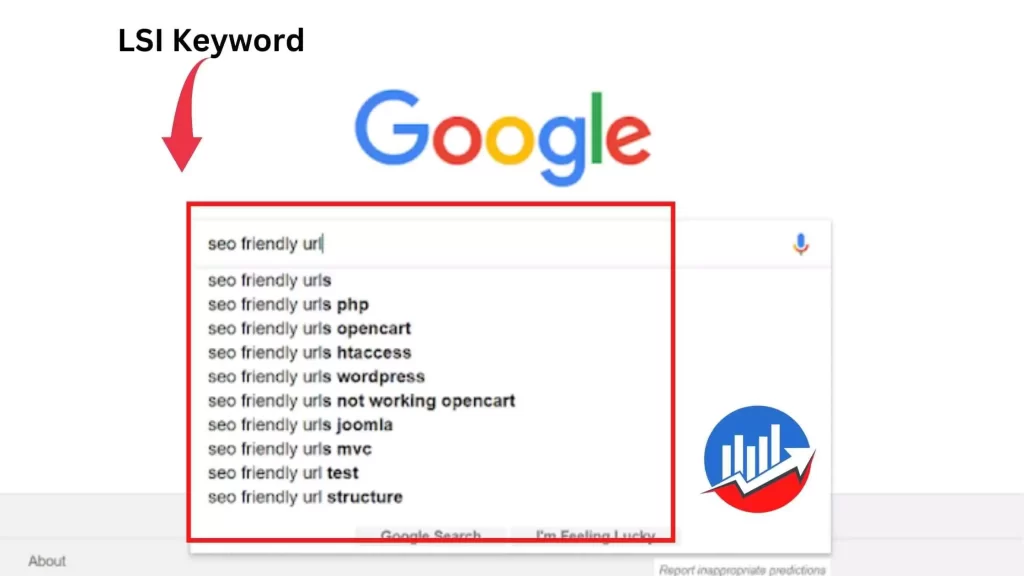What do you think of Immediately after hearing this sentence, SEO content? Many associates the word with empty content and an excessive focus on search terms, which are only written for Google’s sake. Maybe you do too.
However, things don’t have to be that way. If you don’t provide your target audience with relevant, value-creating material at eye level in 2023, your SEO content won’t go very far.
I want to help you with that. That’s why you get ten pieces of content on how to create good SEO contents that guarantee you a ticket to lots of organic traffic and more conversions.
If you need help writing your SEO content, you can contact us here. Otherwise, you read on and get ready to handle the task yourself.
Always start with a keyword analysis.
No SEO content without a keyword analysis. It’s in the name. The keyword analysis is the starting point for your SEO content.
In keyword analysis, you map the words, expressions, and concepts your target audience uses and which you, therefore, also need to use.
I’ve previously written a keyword analysis guide so I won’t waste column space on that topic. Instead, I will content myself with emphasizing that your SEO content will never enjoy the limelight on the first Page of the search results if you have not done your preliminary work.
According to Ahrefs, a lack of insight into the use of keywords in SEO content is precisely one of the primary reasons why 91% have no organic traffic. At all.
It is, among other things, based on keyword analysis, that I have found out that I must remember to use words such as “SEO copywriter,” “SEO copywriting,” and the like. These are keywords that are used when potential customers are looking for what we offer.
A keyword analysis is, in many ways, an important part of your SEO content as the content work.
If you don’t use the right words and get around relevant topics, you’ll end up missing out on traffic.
In the worst case, your SEO text will never be found and end up in the back rows of Google’s search results.
The keywords you find in your keyword analysis give you an overview of the terms and keywords your target audience uses.
Whether you must use all keywords in your SEO content is a balance of various considerations. As an example, I’m not a huge fan of “SEO copywriting” and “SEO copywriting,” just as you may find that some clients use the “wrong” keywords. It could be spelling or language errors.
A classic I usually emphasize is the keyword “SEO optimization.” There are more than 2,400 people who use that keyword every month when they need to find SEO providers. But if we dive for a moment into what “SEO optimization” means, it becomes a bit of a double confection – namely ” Search Engine Optimisation. “
There may also be words or expressions you do not want to be associated with for other reasons. It may be to protect a brand position or to avoid a specific type of traffic from selected keywords. This is just one of the reasons I’ve decided against using “SEO copywriter” or “SEO copywriting” in the post here. Or… I have done that any way to have an example. Oops.
Of course, it is totally up to you. Which keywords do you want to use in your SEO content? But it never hurts to have the full overview.
Understand and answer the search intent
If you remember one thing I said in this article, it’s that now is the time to listen. The most important part of the recipe for SEO content in 2023 is that you understand and answer the search intent.
The search intent covers the reason or motive for the search term in question.
In other words, search intent focuses on who is searching and why and when that person is searching for what they are doing.
Mapping search intent is an extension of your keyword analysis and is just as important as using the right words.
Here, the search results on the first page can indicate what people are looking for in relation to the keyword you are working with. If you don’t understand why people search for “Facebook advertising,” you’ll end up spending effort on keywords that don’t lead to sales.
The search term Facebook advertising” is dominated by guides, content, advice, and recommendations – not sales. It is very much a sign that this keyword is not used for the purpose of finding an agency or a Facebook expert to handle its advertising.
This is not to say that the keyword is not relevant and has commercial value for your business if you are a marketing agency. It certainly has.
It brands the sender of the content as an expert and helps build relationships with people who, in the long run, may be interested in paying for the service.
In this case, the search intent points to searches made by people further up the famous sales funnel – i.e., those who cannot afford professional assistance or want to do it themselves.
And it is important to be included in the considerations when you have to prioritize your time and possibly money on SEO content and want to ensure that it will be a good business.
Therefore, do your preliminary work using Google Analytics and tools such as Ahrefs and Storybase before you write your SEO text. You have to ask yourself: What are people looking for, and how do you adequately answer their questions, objections, doubts, or wonders?
Always prioritize good content.
Your SEO contents stand and fall with the content. In other words, your content’s relevance for the receiver and the value created by interacting with the content. If you’re serving up hot air and empty word calories, your SEO contents aren’t worth much.
Therefore, it would be best if you concentrated on knitting good content together.
But what is good content – apart from a diffuse concept? “Many things” is the short answer. The slightly longer answer is that your SEO content must, among other things:
- Respond to/share knowledge about what the visitor is looking for.
- Have a clear, transparent, and easy-to-read structure and structure.
- Be based on a language that is relevant to the recipient.
- Use psychological ploys and tricks to retain, qualify and convert.
- Serve the main message in the introduction and summarize it in the conclusion.
The above are just a few examples of what good content covers.
Google has also created a relevant and detailed guide to ensure good content: Search Quality Rating Guidelines.
It’s a proper mop boy at 164 pages, so it’s not something you chew through in an afternoon. However, it gives a good insight into what Google values.
Capture the click with a crisp title tag and an inviting meta description
Your title tag and meta description are the first things potential visitors see before they click on your search result and are greeted by your SEO text.
Both parties must invite clicks – otherwise, your content has no value. If no one takes the bait, Google won’t reserve your best seats.
Although, according to several studies ( Hubspot ), your meta description and title tag have no independent influence on your organic ranking, they play a big role in relation to your CTR – i.e., how many people click on your search result and visit your Page. And that is precisely why you must prioritize both parts. They are gatekeepers and a prerequisite for your SEO contents, not gathering dust.
You can use the following templates to create title tags and meta descriptions for your SEO content:
Title tags: [keyword] – [CTA] – [USP] – [brand].
The search term is a good idea to include in order to create transparency and relevance in relation to the search in question.
CTA and USP can be swapped as needed, just as a brand can be omitted if it does not create a trust or contribute to clicks. You don’t have many words to deal with, so each character must be measured and weighed.
Meta description: [question] and [statement of pain/need] – [USP] – [CTA].
Questions are a good tool for concretizing the search intent and articulating the needs of the person conducting the search. It creates relevance and invites clicks, especially if it is followed up by the gains that your search result offers.
Your CTA should give them the final push, where you explain to them what they need to do to get the visit. You will be hard to beat if you can implement structured data, for example, with stars in the search results.
Both parts will always be dynamic sizes, and templates should be adapted to your industry, product, target group, and competitive situation. You should also continuously monitor and adjust when you have a basis for assessing what works.
However, the above templates are a good starting point. Below I have tried to make it more concrete.
Always stay within the recommended limits when it comes to length.
Write long, comprehensive, and in-depth SEO contents
A picture is said to be worth more than 1,000 words, but according to several studies, 1,000 words is now nothing to sneeze at either when we are talking about SEO contents. The marketing expert Neil Patel has previously mapped the relationship between content length and position in search results. The conclusion is relatively clear: Google seems to attach greater value to pages with more content.
And it is important to write behind the ear when working with SEO content. If you wish to succeed in a field where there is fierce competition, you won’t get far with a winged sentence or two.
But do people care to read that many words? It’s a question we often get asked. And the answer is yes as well as no.
If it’s filler and unimportant content that doesn’t tell you anything new or create value for your recipient, you don’t need to pull the plug.
In that case, you, your customers, and Google are wasting each other’s time.
Conversely, you can swear that the target audience will swallow your SEO content raw if you have done your preliminary work and serve something they can use – even if it is 2,000, 3,000, or 4,000 words.
And it makes good sense that longer content performs better. With more words available, you, as a writer, have the opportunity to go in-depth and share your expert knowledge instead of treating a topic superficially. Google has a great interest in giving its users the best of the best.
The extra space also makes using more primary and secondary keywords easier. A longer text also takes longer to digest, and the recipients are likely to be more open to your other content. We’ll get into dwell time and bounce rate a bit later.
Therefore write all that your heart desires. As I said, the length significantly influences how your SEO contents perform.
However, it still focuses on quality and conversion. As mentioned, good content will ultimately turn visitors into paying customers.
And here, you won’t get far with a wall of text, which most belongs in combustible small print.
Remember to use your keywords – several times.
Yes, the days when SEO contents were equal to regular carpet bombing of keywords with a result in the same ballpark as the destruction of Jerusalem are numbered. However, keyword density is not a concept that should be retired.
No, it is still important to keep in mind how often your keyword appears in your content. At least if we let the different data do the talking.
Backlinko has investigated the correlation between keyword density and organic rankings on Google among more than 100,000 websites.
The result shows that search results with a relatively higher keyword density achieve better rankings than when the keyword is not used to the same extent.
The result of the study thus does NOT support that keywords and their frequency should be subordinate.
The principle that good and natural content will always win in the end is something most people agree on. But completely disregarding keywords and their frequency, there doesn’t seem to be any evidence. Rather the contrary.
Many are used to working in plugins like Yoast SEO, which recommends a keyword density of between 0.5 and 2.5%. If you take the above figures for good products, you should aim for a keyword density of +2%.
The limit for when it becomes too much of a good thing is, of course, harder to guess.
However, a cautious conclusion must be that you do not need to go to great lengths to avoid mentioning the keyword you would like to be found on if it does not affect the quality of your SEO content.
As any statistician will be quick to say, correlation is not the same as causation. Nevertheless, it is an indication – and just as much a boast – that a high keyword density is not immediately a mortal sin.
Work with related keywords (LSI)
Latent Semantic Indexing (LSI) sounds very complex, but just put cold water on your blood.
LSI is relatively simple and roughly means that Google attaches value to related words, synonyms, and expressions in its overall assessment of your SEO text.
In other words, the overall impression is decisive for your Page’s position with a selected keyword.
Let’s illustrate LSI using a tangible example. Below is an image of a Google search for “SEO contents”:

This is Google’s attempt to anticipate what we are looking for when searching for Seo-friendly URLs. The same applies to the suggestions you receive in the dropdown menu, just as you will find searches related to your search term at the bottom of the search results.
The above are classic examples of LSI and the importance of focusing on more than just your primary keyword. The presence of synonyms and related keywords is a quality stamp of your content and signals to Google that your contents are relevant to the user.
Help your readers reach goals with internal and external links
Internal links can help your readers find other relevant material and give Google a hint about your page structure and hierarchy.
For example, I linked to FREE SEO TOOL in our post. I do this to give you more value and input for your work with your SEO content.
But it’s just as much to hold on to you. A low bounce rate and a long stay duration, which I’ll get into a little later, are crucial when Google has to assess whether your SEO contents are relevant and create value.
In addition, internal links also help to distribute the strength of the individual pages on your website.
External links are a no-go for some. The argument is that in this way, you send visitors onto other pages and thus dilute your own Page’s strength. However, it has been shot down in several studies.
And it makes good sense if you think about it. Why would it hurt to link to sources, credible websites, or background information that supports your content? If it makes sense and is relevant, don’t hold back from linking to others.
Therefore, make sure to help your readers find other content on your own or other websites with internal and external links in your SEO contents.
Everything is in moderation, of course. A text with links in every other sentence has the opposite effect. So limit yourself and use links as a reference to a source or if it can help your reader.
I recommend reading our guide on “The 15 Simple SEO Tricks.“
Let your expertise, authority, and credibility shine through
You probably don’t ask strangers on the street for your finances or health advice.
In the same way, it is important that you have a professional basis for writing about what you do. You must possess and radiate EAT:
- Expertise
- Authority
- Credibility.
This is relevant when it comes to information that might affect crucial aspects of our life.
But even though you may be writing SEO content about mundane topics, you
It is all something that gives their arguments ballast and weight, which has been one of Google’s major focus areas in connection with an update of the algorithm. It should, therefore, also be a priority in your SEO content.
Stick to your target group with a focus on dwell time and bounce rate
Two bad and irrelevant SEO content symptoms are a low dwell time and a high bounce rate.
- Dwell time covers the time people spend on your website.
- The bounce rate describes how many people bounce away from your website after viewing just one Page.
Good SEO contents focus on engaging the visitors longer people remain on your website, the longer you have to persuade them to buy or sign up for your newsletter.
There are many roads to Rome as long as you are creative in how you think about SEO content. A few examples are:
- Internal links to related content
- Interactive content such as games, quizzes, or tests
- Chat function where visitors can get help and guidance.
Among other things, we have worked with rejection rate and dwell time on our blog post about comma rules.
Here, the visitors jump away quickly. That’s why we made a supplementary post with a test in the form of 24 questions, where people can try the rules in practice.
This has resulted in a higher dwell time and lower bounce rate on our original posts, and in addition, the comma test has started to get organic visitors.
So a win-win situation and thus underlines how important it is to engage your visitors.
Examples and templates of good SEO content
It may seem unmanageable to boil all ten contents down to SEO text. Therefore, let’s end the party with a few examples of good SEO content and a template you can build your content on. We start with the examples…
1. Category Contents
The category pages are often the pages that can attract organic traffic. Therefore, it is important to equip them with good SEO content. Here is Watery as a good example:
2. Blog post
Blog posts/knowledge articles are a bit of a different ballpark than the more commercial SEO content, such as products or product categories.
However, the same things are decisive for whether your text is on the Front Page. It is a smart and efficient method of serving content that matches the search intent.
3. Template
It is important to emphasize that a template for SEO content must always be adapted to the text type and purpose. However, we always use the following structure as a starting point:
· Heading/H1
Your heading should be formatted as H1. We usually include the primary keyword while focusing on arousing interest and curiosity.
· Introduction
Give your introduction lots of love. The first two sentences greatly impact whether your readers linger or rush on.
So weigh each word on the scales. Feel free to use your keyword in the introduction so that your visitors know they have arrived at the right place. We try to keep the opening paragraph to 50-100 words.
· Subheadings/H2
Once you’ve whetted your audience’s appetite with a crisp introduction, your subheadings/H2s mustn’t disappoint.
Many quickly skim the subheadings and assess whether the other content is worth their time. So make your readers curious. Also, use LSI and secondary and tertiary keywords in your H2s.
· Body text
If you have passed the above for UG, the main text is the only thing standing between you and world domination. This is where you have to provide valuable knowledge, answer questions, give advice or do something completely different.
It must therefore have a full-throttle on the good content, keywords, internal links, CTAs, and other freebies – do your magic!
The body text is, of course, what fills it up. After all, this is where the real content lies. As mentioned, the length of your SEO content is of great importance. You can read more about our recommendations in relation to scope across SEO content here.
· Closing
The conclusion of your SEO copy should get almost as much love and attention as the introduction.
Especially if you need to convert those who only skim your SEO text, use your closing to summarize the main points, for example, in bullet form, and to encourage your recipient to take the action you want.
Try to settle for around 100 words so that the last verse does not become filler when the recipient is already on his way out the door. Instead, throw CTAs and USPs at the visitor before they jump ahead.
Other elements such as images, videos, and interactive content should be inserted where and when it makes sense. It helps make your content more palatable.
Ready to conquer the Front Page?
Did you chew your way through, or are you one of those impatient souls who skipped straight to the end?
Regardless, for good measure, you get a quick summary of our ten contents for writing good SEO contents in 2023:
- Do a keyword analysis.
- Stay focused on and adapt your content to the search intent.
- Make good content your priority.
- Throw love after the title tag and meta description.
- Please write as much as you can, but keep it relevant.
- Use your keyword when it makes sense.
- Incorporate LSI into your text.
- Help your readers with internal and external links.
- Underpin your professionalism and use trust signals.
- Supplement your text with images, videos, or the like.
I hope you got answers to what you were in doubt about and that you are now ready to write a handful of good SEO contents.
If you have any questions or have a tip worth its weight in gold, you are more than welcome to leave a comment in our Facebook group!
FAQ – Frequently Asked Questions
What are SEO contents?
An SEO context is a text written according to Google’s guidelines and aiming to conquer organic positions in the search results.
How many times should the keyword be used?
According to studies, the primary keyword should make up 1-2.5% of the content. If you have a text of 1,000 words, you should like to use the keyword 10-25 times.
What is the search intent?
The search intent is the underlying intention behind the user’s search term choice. If you don’t understand the search intent behind the specific keyword, it can become impossible to rank for a particular keyword.
How long should an SEO text be?
Several studies show a correlation between longer trips and better positions in the search results. A category text should preferably be a minimum of 800 words, and a blog post can be up to 2,500 words. However, it is important that you focus on creating value and answering the search intent.
What are LSI keywords?
LSI is an abbreviation for “Latent Semantic Indexing.” The term covers related words or synonyms to the primary search term that can make sense to work with.





